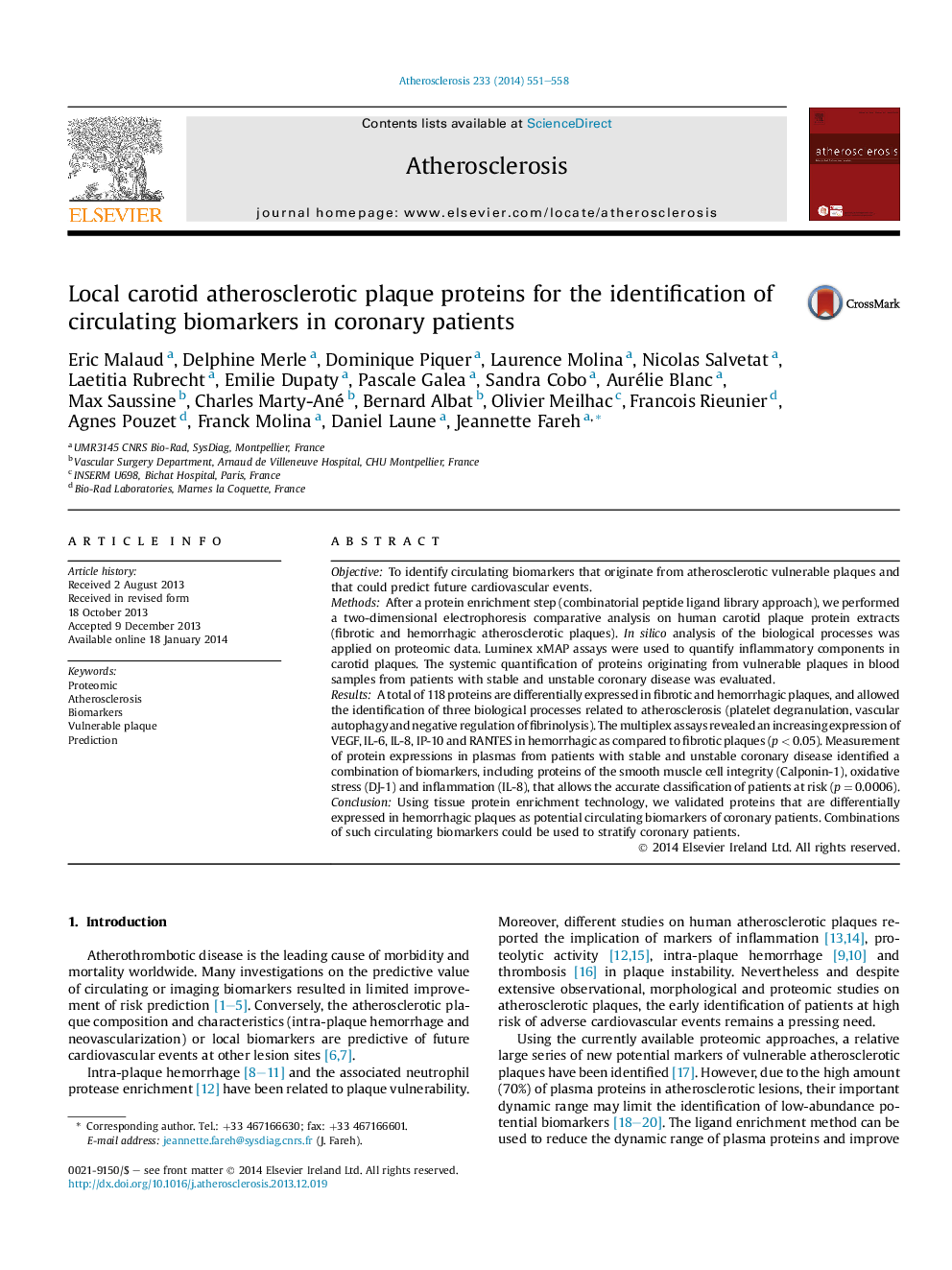| Article ID | Journal | Published Year | Pages | File Type |
|---|---|---|---|---|
| 5945890 | Atherosclerosis | 2014 | 8 Pages |
â¢Successful identification of new biomarkers of atherosclerotic plaque vulnerability after innovative protein enrichment.â¢In silico analysis based on plaque profiling revealed biological networks related to atherosclerosis (vascular autophagy).â¢First immuno-validation of tissue biomarkers after proteomic analysis leading to detectable circulating biomarkers.â¢Circulating biomarkers identified from carotid are able to successfully stratify patients with coronary artery diseases.
ObjectiveTo identify circulating biomarkers that originate from atherosclerotic vulnerable plaques and that could predict future cardiovascular events.MethodsAfter a protein enrichment step (combinatorial peptide ligand library approach), we performed a two-dimensional electrophoresis comparative analysis on human carotid plaque protein extracts (fibrotic and hemorrhagic atherosclerotic plaques). In silico analysis of the biological processes was applied on proteomic data. Luminex xMAP assays were used to quantify inflammatory components in carotid plaques. The systemic quantification of proteins originating from vulnerable plaques in blood samples from patients with stable and unstable coronary disease was evaluated.ResultsA total of 118 proteins are differentially expressed in fibrotic and hemorrhagic plaques, and allowed the identification of three biological processes related to atherosclerosis (platelet degranulation, vascular autophagy and negative regulation of fibrinolysis). The multiplex assays revealed an increasing expression of VEGF, IL-6, IL-8, IP-10 and RANTES in hemorrhagic as compared to fibrotic plaques (p < 0.05). Measurement of protein expressions in plasmas from patients with stable and unstable coronary disease identified a combination of biomarkers, including proteins of the smooth muscle cell integrity (Calponin-1), oxidative stress (DJ-1) and inflammation (IL-8), that allows the accurate classification of patients at risk (p = 0.0006).ConclusionUsing tissue protein enrichment technology, we validated proteins that are differentially expressed in hemorrhagic plaques as potential circulating biomarkers of coronary patients. Combinations of such circulating biomarkers could be used to stratify coronary patients.
